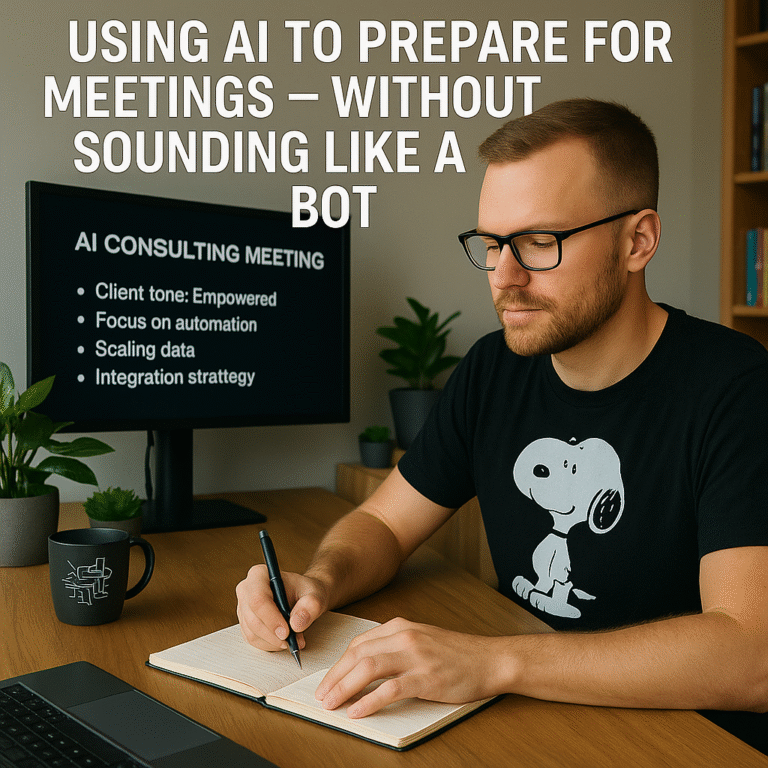AI isn’t a replacement for knowing your client, but it’s damn good at making sure you show up to the call like you’ve known them for a week. I use AI before every meeting to compress hours of research into something useful, personal, and human-sounding. And no, it doesn’t make me sound like a robot.
Here’s how I do it.
First, I scrape everything I can about the person, the company, and their product or service. Website copy, case studies, recent LinkedIn posts, news mentions, podcast appearances – anything with language that comes from them. It’s not just about facts. I’m capturing tone, vocabulary, values, and pain points in their own words.
Then I throw that into GPT. Sometimes I use ChatGPT with browsing enabled. Other times I build a quick job in n8n or Node.js to pull data and inject it into an API call. Either way, the goal is context: feed the model what I know, and have it synthesize the rest.
I’ll ask it questions like:
- “Summarize this company’s tone and messaging style.”
- “What problem are they solving, based on their site and case studies?”
- “What pain points is this person likely to care about, based on their public statements?”
- “Draft five questions I could ask that would show I’ve done my homework.”
Then I check it. I’m not copy-pasting what it gives me. I’m filtering it, tweaking it, turning it into real human engagement. The result? I show up to the call knowing what their product actually does, how they talk about it, and what matters to them – without spending two hours going down rabbit holes.
I also use AI to summarize long PDFs or client decks. OCR if I need to. Extract bullet points. Ask GPT to rewrite their 40-slide onboarding doc into a two-minute intro script. Saves me time, saves them the pain of explaining it again.
The key is that I’m not using AI to speak for me. I’m using it to reduce the noise so I can focus on the conversation. It’s like having a junior analyst who never sleeps and doesn’t ask dumb questions. The better you feed it, the better it works. Garbage in, garbage out. Same as always.
This isn’t rocket science. It’s just tactical use of tools to make sure when I open my mouth in a meeting, I’m saying something relevant, sharp, and informed. And unlike a lot of AI consultants out there, I don’t need to bluff my way through it. I’ve actually done the prep.
AI can’t fake insight. But it’s great at making sure you don’t miss the obvious. That’s how I use it. No bullshit. No buzzwords. Just leverage.

